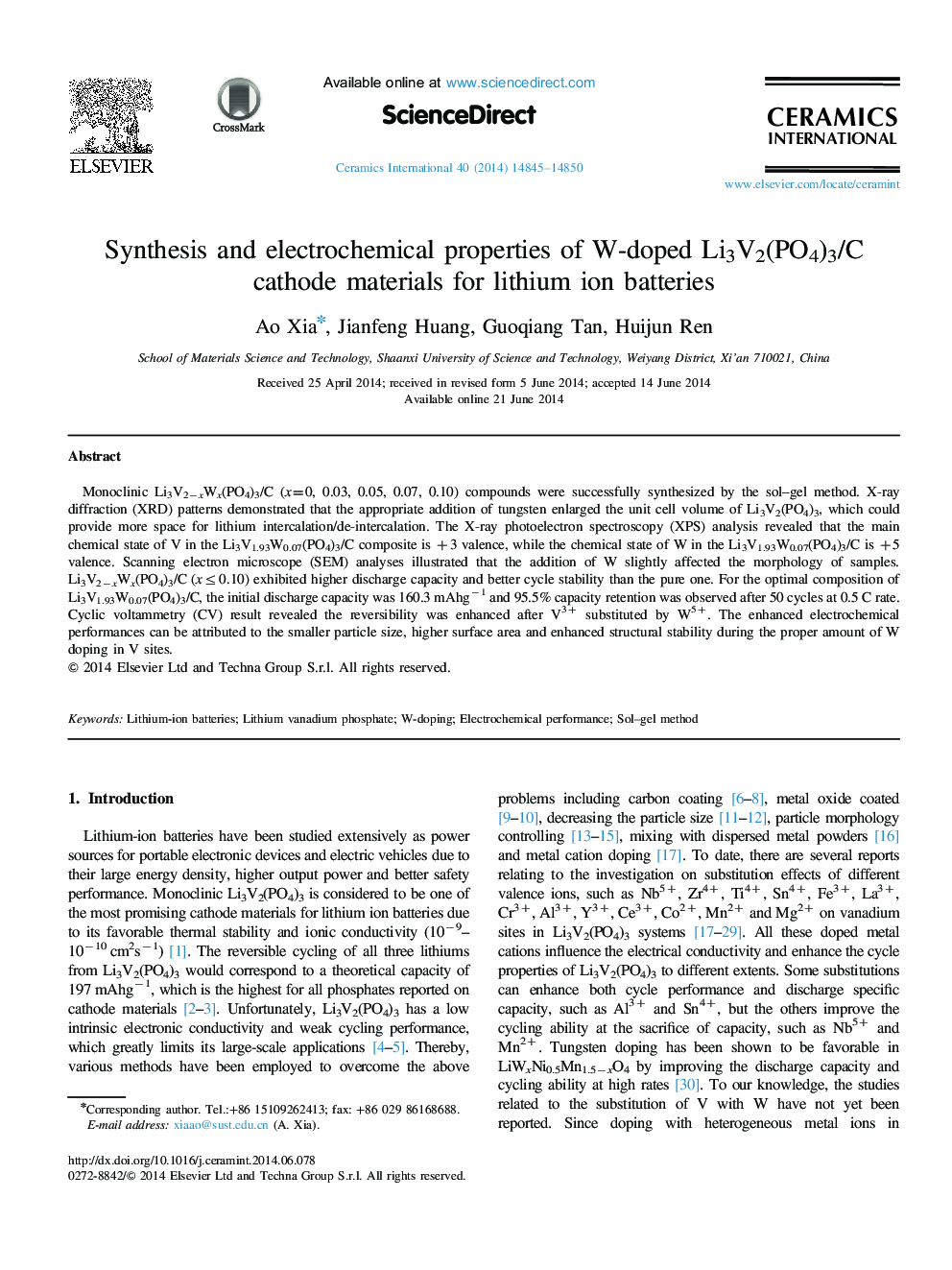| Article ID | Journal | Published Year | Pages | File Type |
|---|---|---|---|---|
| 1461227 | Ceramics International | 2014 | 6 Pages |
Monoclinic Li3V2−xWx(PO4)3/C (x=0, 0.03, 0.05, 0.07, 0.10) compounds were successfully synthesized by the sol–gel method. X-ray diffraction (XRD) patterns demonstrated that the appropriate addition of tungsten enlarged the unit cell volume of Li3V2(PO4)3, which could provide more space for lithium intercalation/de-intercalation. The X-ray photoelectron spectroscopy (XPS) analysis revealed that the main chemical state of V in the Li3V1.93W0.07(PO4)3/C composite is +3 valence, while the chemical state of W in the Li3V1.93W0.07(PO4)3/C is +5 valence. Scanning electron microscope (SEM) analyses illustrated that the addition of W slightly affected the morphology of samples. Li3V2−xWx(PO4)3/C (x≤0.10) exhibited higher discharge capacity and better cycle stability than the pure one. For the optimal composition of Li3V1.93W0.07(PO4)3/C, the initial discharge capacity was 160.3 mAhg−1 and 95.5% capacity retention was observed after 50 cycles at 0.5 C rate. Cyclic voltammetry (CV) result revealed the reversibility was enhanced after V3+ substituted by W5+. The enhanced electrochemical performances can be attributed to the smaller particle size, higher surface area and enhanced structural stability during the proper amount of W doping in V sites.
